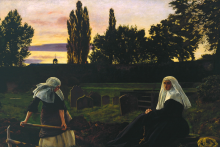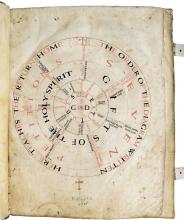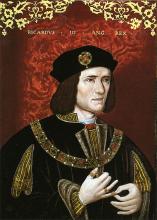Medieval

In Lauren Groff’s newest novel, Matrix, monastic life in the High Middle Ages serves as a stunning backdrop for the story of Marie, a nun who feels “her greatness hot in her blood.” Marie arrives at an English abbey as a reluctant teenager, at the appointment of her queen, Eleanor, who expects Marie to become abbess and save the Crown from the public shame of a royal abbey where nuns die of starvation and disease.

If much of life in the High Middle Ages seems foreign to us, the detailed workings of the wheel — along with four others like it that have survived to the present — are a real riddle.
Schematic prayer guides were more common in later centuries, said Lauren Mancia, a medievalist at Brooklyn College who has examined the Liesborn Wheel.
“Monks and nuns in the Central Middle Ages often get a bad rap for unsystematic thinking — doing all this prayer by rote, mumbling, and not caring about the sense,” said Mancia.
“This diagram suggests that they’re not just mumbling, they’re using a mnemonic device to remember and internalize, or even to make an inner journey.”

The hunt for King Richard III's grave is heating up, with archaeologists announcing today that they have located the church where the king was buried in 1485.
"The discoveries so far leave us in no doubt that we are on the site of Leicester's Franciscan Friary, meaning we have crossed the first significant hurdle of the investigation," Richard Buckley, the lead archaeologist on the dig, said in a statement.
Buckley and his colleagues have been excavating a parking lot in Leicester, England, since Aug. 25. They are searching for Greyfriars church, said to be the final resting place of Richard III, who died in battle during the War of the Roses, an English civil war. A century later, Shakespeare would immortalize Richard III in a play of the same name.
After his death in the Battle of Bosworth Field, Richard III was brought to Leicester and buried at Greyfriars. The location of the grave, and the church itself, was eventually lost to history, though University of Leicester archaeologists traced the likely location to beneath the parking lot for the Leicester City Council offices.